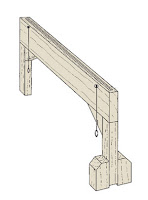Capiz is a province of the Philippines located in the Western Visayas region. Its capital is Roxas City and is located at the northeastern portion of Panay Island, bordering Aklan and Antique to the west, and Iloilo to the south.
Capiz faces the Sibuyan Sea to the north. Capiz is known for its mother-of-pearl shells that have the same name and are used for decoration, making lampshades, trays, window doors, etc.. Capiz is known for a popular local myth of Aswang, a generic name for ghouls, monsters and witches.
Capiz “Seafood Capital of the Philippines”, because of having a one of the highest contributors of aquamarine industry of the Philippines and swampy beside the sea the fishermen in the area can easily make it into pond for culturing fishes.
Farming and fishing are the primary sources of income of the people. The combined natural bounty of land and sea are enough to sustain a vibrant food industry. Its primary agricultural raw products are rice, corn, coconut, sugarcane, banana and cut flower. Apart from a surplus of agricultural products it generates every year, Capiz is also one of the country’s major suppliers of prawn and milk fish. Other agro-industrial harvests include blue marlin, squid, oysters, shrimp, seaweed, squid and angel wings. The rich fishing grounds attract investors to venture into prawn culture, prawn feed manufacture, seaweed farming and the distribution and processing of other marine products. It has a strong workforce of 445,246 with a literacy rate of 90.5% The agricultural sector makes the province one of the wealthiest in the Western Visayas Region although corruption has a high tendency to halt progress.
Its relatively unexplored caves are said to have high deposits of mineral resources such as limestone, gold and metal.
 the the line or course. From getting the pace factor by pace or one step, or by the stride or double step, you can use your own pace factor to measure a line or a course.
the the line or course. From getting the pace factor by pace or one step, or by the stride or double step, you can use your own pace factor to measure a line or a course. 











